Removal features depending on the type of paint and base
Before you start removing paint from the walls, you need to assess the situation:
- determine the type of paint and the base under it;
- decide how much time and money you are willing to spend;
- choose a suitable paint removal option.
Types of paint
To determine the type of paint, start with a visual assessment. Enamel and oil paints have a glossy surface. Water-based compositions are easily washed out with water. Acrylic does not shine and does not dissolve in water.
Water-based
Often used on ceilings and in dry rooms, removing this paint from the wall is as easy as shelling pears:
- Pour warm water into the basin.
- Dampen a roller or rag in water, dampen the walls.
- Wait 15-20 minutes.
- Remove the coating with a spatula.
Tip: Before starting work, cover furniture and floors with plastic foil.
Instead of a roller or rag, it is convenient to use a pump sprayer - fill it with hot water and spray. It is also convenient to soak the wallpaper.
Acrylic
Unlike water-based paints, this one will have to be scraped off, while working on a dry surface.
You can remove acrylic paint from the walls in a bathroom or another room using coarse sandpaper - however, it will take a long time to rub and you will need more than one sheet.
Another option is temperature. Heat up the old paint with a construction hair dryer and remove it like a film. A detailed technique is described in the video.
Tip: If you plan to re-apply acrylic paint to the walls, the old coating does not need to be removed.
Oil
the base, you will have to try. A solvent will help to remove the oil paint from small areas, however, it has a pungent smell and if the room does not have sufficient ventilation, it is better to refuse this option.
Proven temperature method for removing paint from walls:
- Heat the area with a building hair dryer.
- Remove paint with a spatula.
Important: When heated, caustic substances are released into the air, so you need to work in a respirator and in a well-ventilated apartment.
The safest, but time-consuming method is mechanical. A hammer drill with a special nozzle will help speed up the process, the process is described in the video:
To reduce the negative effects of vibration on joints, wrap the attachment with a rag or foam rubber.
Base
The choice of the way to remove the old coating, as well as its speed and complexity, is influenced by the base.
Concrete
One of the most problematic combinations is an old coat of Soviet oil paint on a concrete wall. However, due to the porosity of the material, it is not easy to tear off any composition from it. The plus is that you can use any method: mechanical, chemical or thermal.
Plaster
Due to the ability of the plaster to swell, it will be easy to remove paint from the walls above it. The simplest order is:
- Make notches on the surface.
- Apply warm water using a roller or spray.
- Leave to act for 20-30 minutes.
- Remove the paint along with the plaster.
Brick
Any brick, whether silicate or ceramic, is defenseless against chemical compounds, so the use of a wash is swept aside. You will not only ruin the appearance, but also destroy the masonry itself. Harsh mechanical cleaning with sand or a hammer drill is also dangerous for bricks.
The most reliable option in this case is sandpaper or a spatula. Or, in order to save time, you can order a soft blasting service from professionals:
Mechanical paint removal methods
The safest in terms of the absence of toxic substances and unpleasant odor is the mechanical removal option. You will need an additional tool that you can buy or rent.
Important: Take care of your own safety before any work. Put on your protective suit, goggles, respirator and gloves!
Spatula
The simplest and cheapest method is a spatula. With it, you can remove paint from walls, even in corners, around outlets and switches. The disadvantages include the complexity and duration of the work.
The blade is often used in combination with thermal or chemical treatment. That is, the coating is initially heated or dissolved, and then cleaned off.
It is convenient to use a sharp spatula-scraper, the advantages of which are described in the video:
Grinder
One of the fastest but most dangerous methods. If you do not have the skills to work with this tool, it is better to entrust the task to professionals or choose another method of paint removal.
The downside is the large amount of dust and noise that the neighbors will not like.
Professionals advise using not a stiff metal brush, but a diamond bowl - thanks to its strength and high rotation speed, you can quickly and easily remove even a thick layer of paint. You will learn how to choose and apply it from the video:
Stameskaya
The main advantage of a manual chisel is durability. If necessary, this tool can even withstand hammering without bending or deforming.
To clean paint off the walls this way:
- Sharpen the chisel (this step needs to be repeated periodically).
- Place to the wall at an angle of 60-80 degrees.
- Tap on it, leaving gaps of 3-5 mm.
- Scrape off any residue with a chisel or spatula.
With an ax
For this method, choose a light and convenient tool, because you won't be able to work with a heavy ax all day.
The idea lies in the same notches as when working with a chisel. But here you only need an ax.
Keep it at right angles and hit the wall 3-5mm apart.
Important: The paint will fly off, so protective goggles will come in handy.
Drill with different attachments
Many craftsmen consider this method to be optimal, because there is a drill in almost every home, it is lighter than a punch and safer than a grinder. Moreover, the process will take place much faster than when working with a hand tool.
As with the grinder, the iron brush is not the most reliable option. It is much faster and easier to remove the composition from the wall using several fixed chains. Such a nozzle is not difficult to make on your own, while its cost will be minimal. But you need to work with such a structure at low speeds and away from furniture or plumbing.
In the video, you will see the method in action:
Chemical paint strippers
The easiest way is to remove paint from the wall using special compounds. It is enough to apply them, wait and remove the coating. But the same method negatively affects the respiratory tract, so if you are cleaning the walls in the bathroom, kitchen or toilet, take care of ventilation.
Ready wash
The products are available in the form of gels, liquids, aerosols and powders. Depending on the composition, there are acidic, alkaline and organic. Each type has its own wash, but there are also universal ones. For example: Fail-5, Antikras. Docker S4.
Important: When working with any chemistry, take precautions - wear a respirator, rubber gloves, properly dispose of the remnants of the product.
Consistent use is necessarily indicated on the package, but usually the steps are about the same:
- Clean the surface covered with paint from dust, if necessary, make notches for better penetration.
- Dilute the composition (when working with concentrates and powders).
- Apply to walls, floor or ceiling. Cover with foil for better effect.
- Wait a certain amount of time.
- Remove the coating with a spatula or chisel.
Homemade remover
You can make your own remover, here are some recipes:
- 250 ml of 10% ammonia, 1 liter of water, 2 kg of chalk. Mix thoroughly, apply evenly on the wall, wait 2 hours. Remove old paint.
- 100 g of soda ash, 300 g of quicklime, water. Dilute to the consistency of thick sour cream, apply for 12 hours, remove mechanically.
Homemade mixes work on flaking or fresh coatings, it is better to remove strong or old ones mechanically or with a professional compound.
Thermal methods of cleaning the wall from old paint
Using high temperatures to remove paintwork is a last resort. After all, this option is considered dangerous due to the possibility of ignition and the release of corrosive substances into the air.
Home iron
A simple option does not require professional tools, but will be effective only on low-quality surfaces:
- Preheat your iron to maximum.
- Tear off a sheet of thick foil.
- Heat the wall through the foil.
- Remove the material with a spatula or other sharp object.
Building hair dryer
Technical hair dryers are capable of heating up to 500-600C, which allows you to melt a layer of paint on any surface, including wood. And the soft material can be easily removed with a spatula.
You can learn more about the method from the video:
What's the fastest way?
The fastest mechanical option is to use a drill or grinder. Probably, it will be faster and easier to remove the enamel with a special wash, but one should take into account the harm of the composition itself and its high price.
Always start the fight with old paint with an assessment: the composition, the coating under it and your own capabilities.

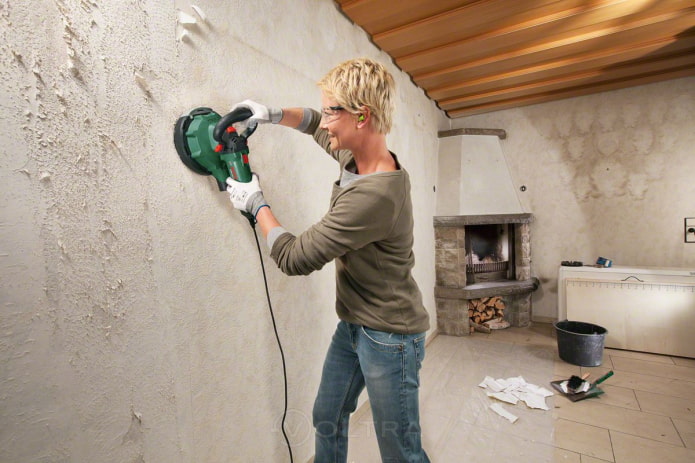
 10 practical tips for arranging a small kitchen in the country
10 practical tips for arranging a small kitchen in the country
 12 simple ideas for a small garden that will make it visually spacious
12 simple ideas for a small garden that will make it visually spacious



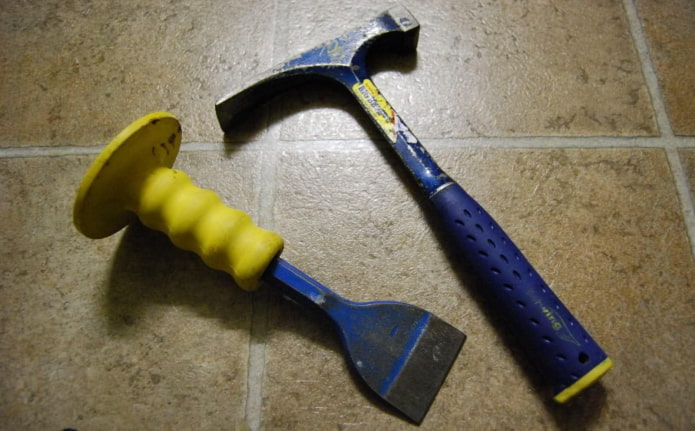
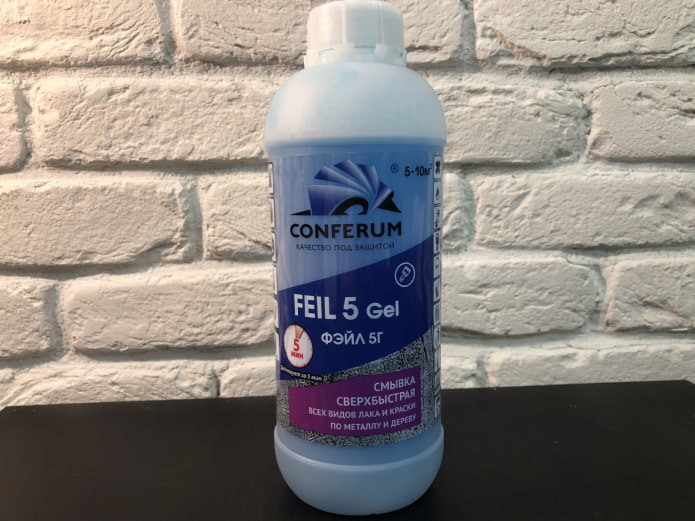
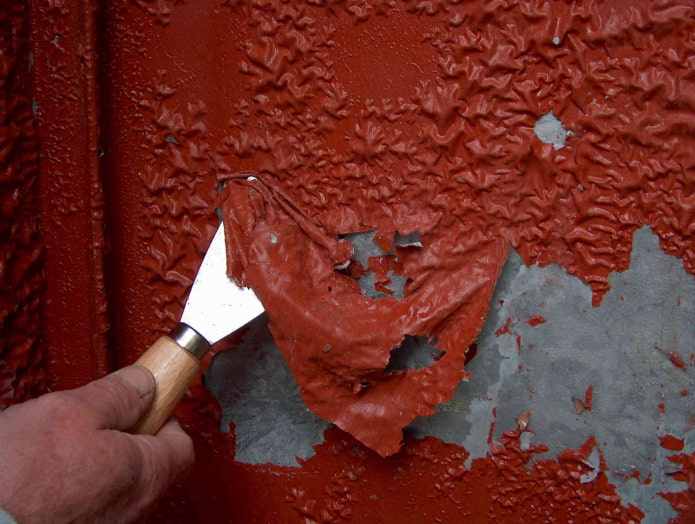
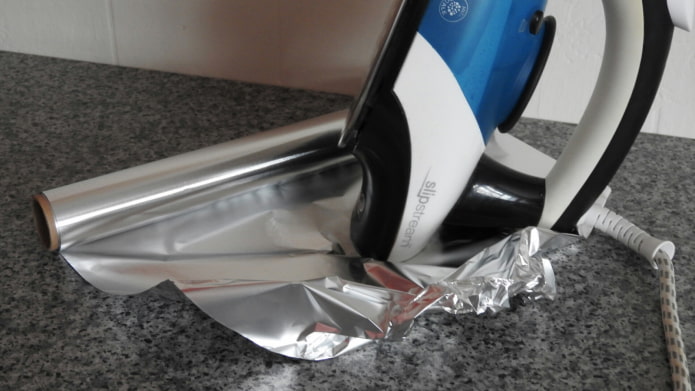
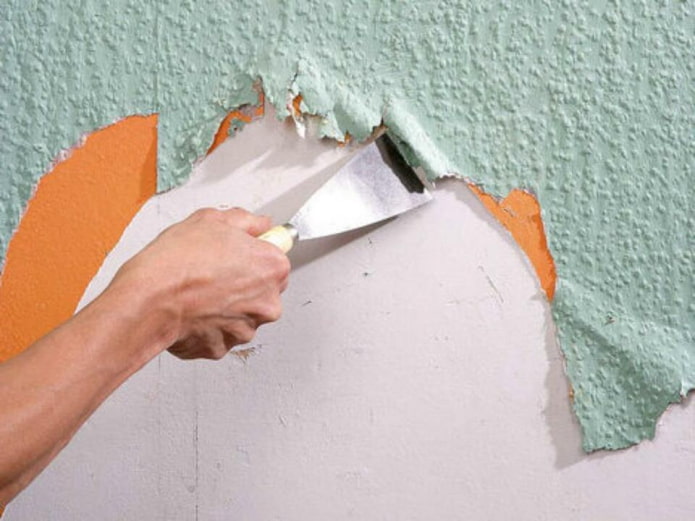
 What is better not to do it yourself during the repair?
What is better not to do it yourself during the repair? Bloated linoleum: how to fix it without disassembly
Bloated linoleum: how to fix it without disassembly The worst decisions in apartment renovation
The worst decisions in apartment renovation  Installation of ceiling tiles: choice of materials, preparation, order of work
Installation of ceiling tiles: choice of materials, preparation, order of work How to glue a ceiling plinth to a stretch ceiling?
How to glue a ceiling plinth to a stretch ceiling? Ceiling plinth for stretch ceiling: types, recommendations for selection
Ceiling plinth for stretch ceiling: types, recommendations for selection